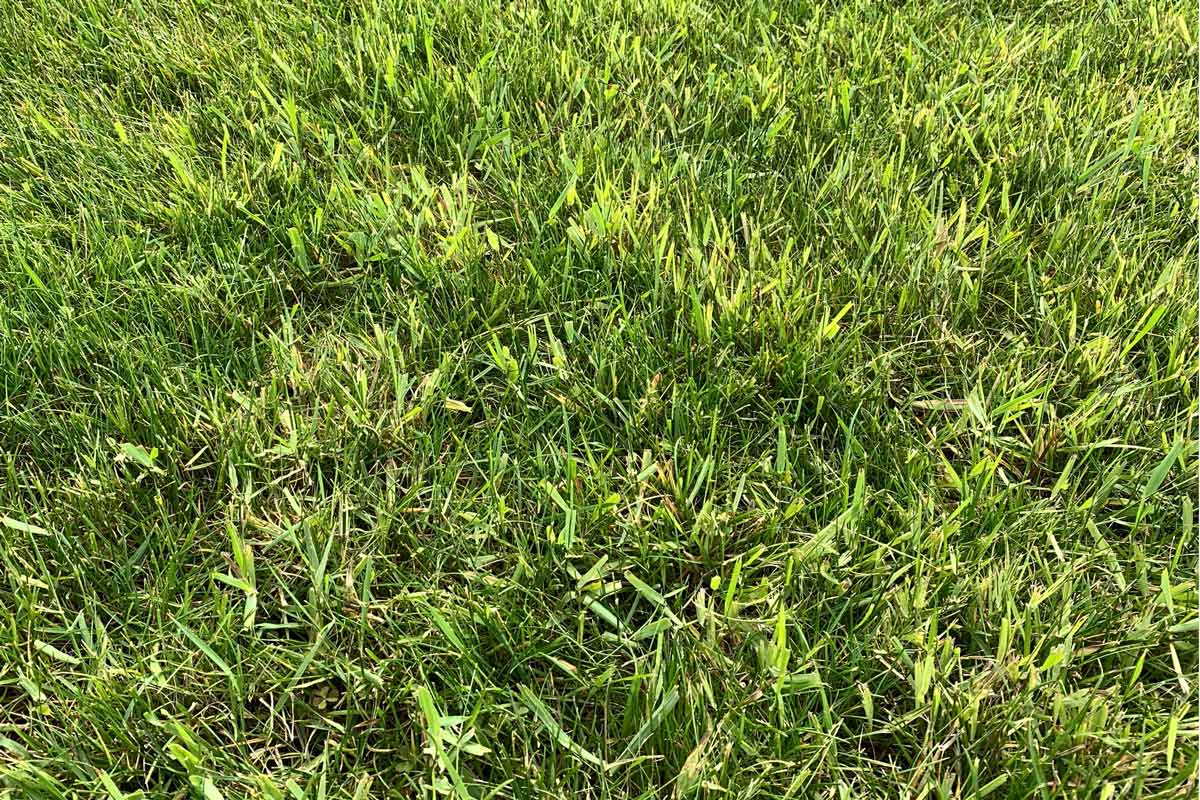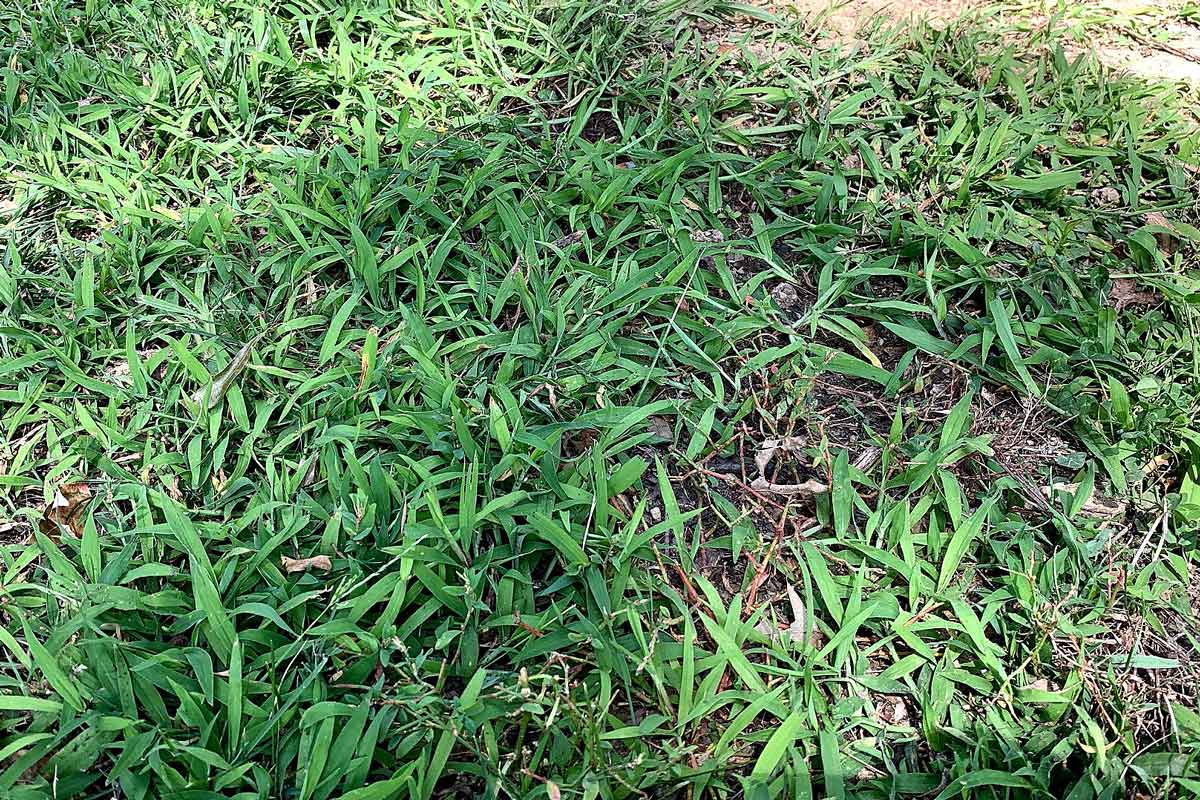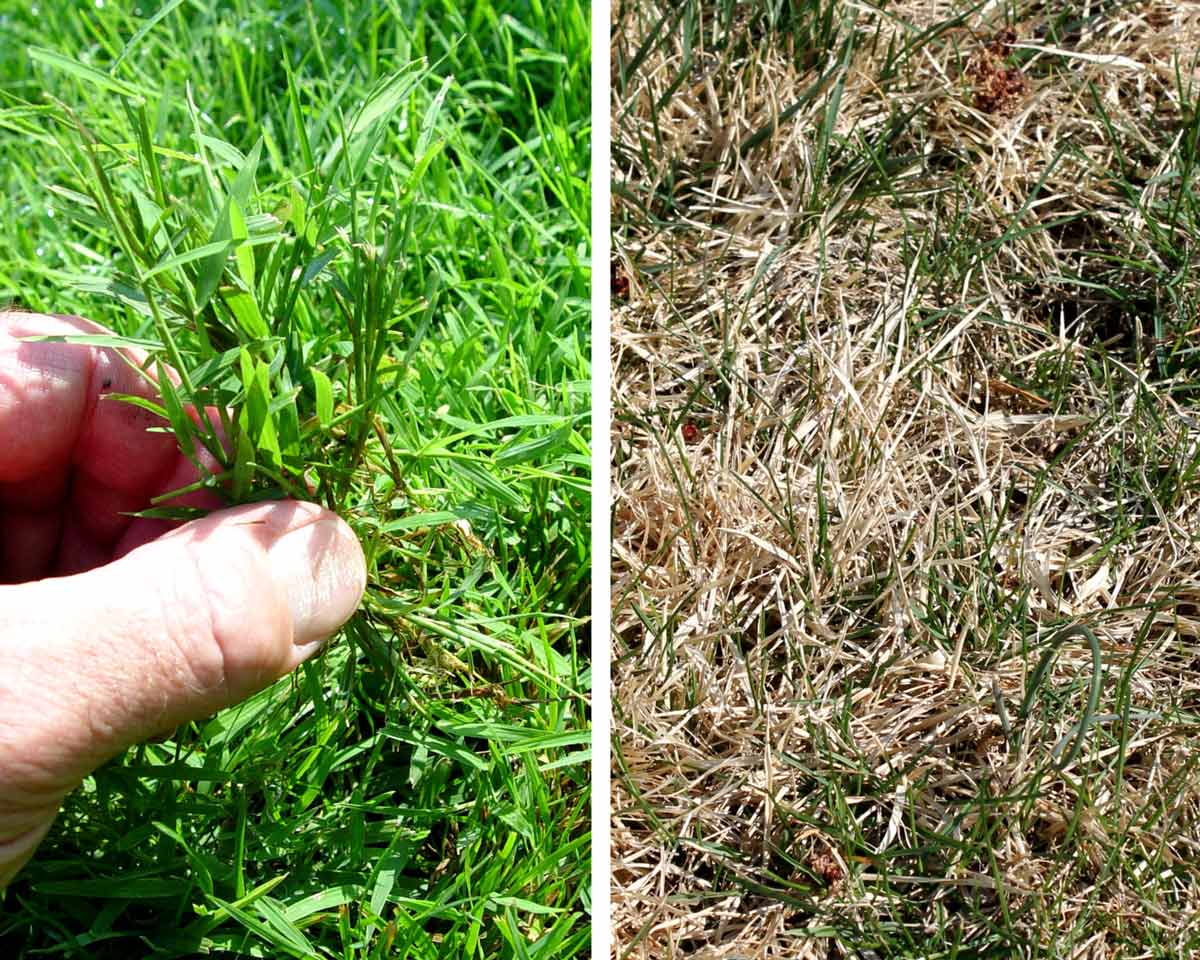Why Crabgrass Can Be Worse the Year After a Wet Season
Last year's rainy summer means more crabgrass seeds will sprout this year, unless you stop it in its tracks this spring.
Broadleaf weeds such as dandelions, plantain, and thistle are easy to notice in a lawn because they look so different among the slender blades of grass.
Less noticeable but just as aggressive is another class of lawn invaders – grassy weeds.
These weeds can blend in among the “real grass” long enough to establish dense, hard-to-control colonies before the lawn-owner realizes the competition.
And because grassy weeds – sometimes called “junk grasses” – are so similar botanically to desired turfgrasses such as Kentucky bluegrass, perennial ryegrass, and fescues in the North and Zoysiagrass, St. Augustinegrass, and bermudagrass in the South, it’s not as easy to spray away the invaders with an herbicide.
Unwanted grass seeds commonly sneak into yards on trucked-in soil or on the backs of birds, they can blow in from nearby fields or weedy neighboring lots, and they can hitch a ride in the pots of new plants or in bird-seed mixes.

Grassy weeds can easily blend into turfgrass if you’re not paying attention. George Weigel
The most important factor in controlling grassy weeds is determining whether they’re annual weeds – i.e. they sprout, grow, produce seed, and die all in one year – or perennial ones – they come back year after year from their own overwintered roots.
That’s important because the category determines the course of action.
Examples of annual grassy weeds are foxtail, barnyardgrass, goosegrass, annual bluegrass, field sandbur, signalgrass, witchgrass, and the best known of this bunch, crabgrass.
Examples of perennial grassy weeds that come back year after year are quackgrass, orchard grass, brome, Johnsongrass, lovegrass, nutsedge, and the common but little-known nimblewill.
For help identifying the grassy weed you have, check out the Weed ID section of Preen’s website.
If these grassy weeds look similar enough to blend into lawns, why get rid of them?
Some lawn-owners are OK with the look, figuring that anything green beats bare soil or investing time and money on a uniform lawn.
Other lawn-owners, though, don’t like the more “ragged” appearance that results from the differing leaf sizes, colors and textures, and faster growth rates and patterns of the various grassy competitors.
Nutsedge, for example, grows faster than turfgrass and sticks up in a noticeably yellow-green color. Goosegrass has a wider, coarser texture that sprawls across the finer green turfgrass blades. And nimblewill has wiry texture and a habit of turning brown in colder weather.
But beyond cosmetic judgments, many grassy weeds are more aggressive growers than desired turfgrasses. That means that over time, they can increasingly dominate a lawn to the point where there’s little desired grass left.
Second, grassy weeds in the lawn can throw seeds into garden and landscape beds, leading to outbreaks where you don’t want them at all.

Aggressive growers like crabgrass can choke out thin stands of existing turfgrass. George Weigel
Annual grassy weeds are easier to control because they die off at season’s end and depend on sprouting anew from fallen seeds the following spring. That’s when lawn-owners can shut the door by applying a weed preventer before those new seeds sprout.
Preen One Lawncare, for example, is a three-way granular product that prevents many weed seeds from germinating when applied in early spring. It kills many more after they’ve sprouted when applied in late spring to early summer. (It also contains a fertilizer.)
In all, Preen One Lawncare controls 265 weeds, including such annual and perennial grassy ones as crabgrass, barnyardgrass, annual bluegrass, brome, goosegrass, dallisgrass, and three types of foxtails. It’s labeled for use on most lawns, except for St. Augustinegrass, colonial bentgrass, dichondra, and carpetgrass.
Limited outbreaks of annual grassy weeds in the lawn can also be controlled by hand-pulling them. They come out easily since the plants are so young. Otherwise, this year’s plants will die at season’s end.

Nimblewill is a perennial weed that’s common but little known – and has the habit of turning brown in cold weather (right). George Weigel
Perennial grassy weeds are tougher opponents because they come back from their own roots each year, rendering weed preventers useless. And since they’re so similar to desired lawn grasses, most herbicides can’t kill them without harming the surrounding “good” grass.
That leaves home-owners with two practical choices: 1. dig out perennial grassy weeds by hand (roots and all to prevent regrowth), or 2. spray them with a kill-everything herbicide such as glyphosate or peppermint oil (usually twice).
In a few cases, herbicides are available to selectively kill grassy weeds without harming surrounding turfgrass.
Mesotrione is a labeled control for nimblewill in lawns, for example, and sulfentrazone is labeled to kill sedges in lawns. These are most effective on young weeds and usually take more than one application to eliminate a colony.
Once perennial weeds are pulled or killed, the bare ground should be reseeded or sodded ASAP so new weeds don’t simply recolonize.
Right after Labor Day through mid-October is an ideal time for this work in most of the U.S.